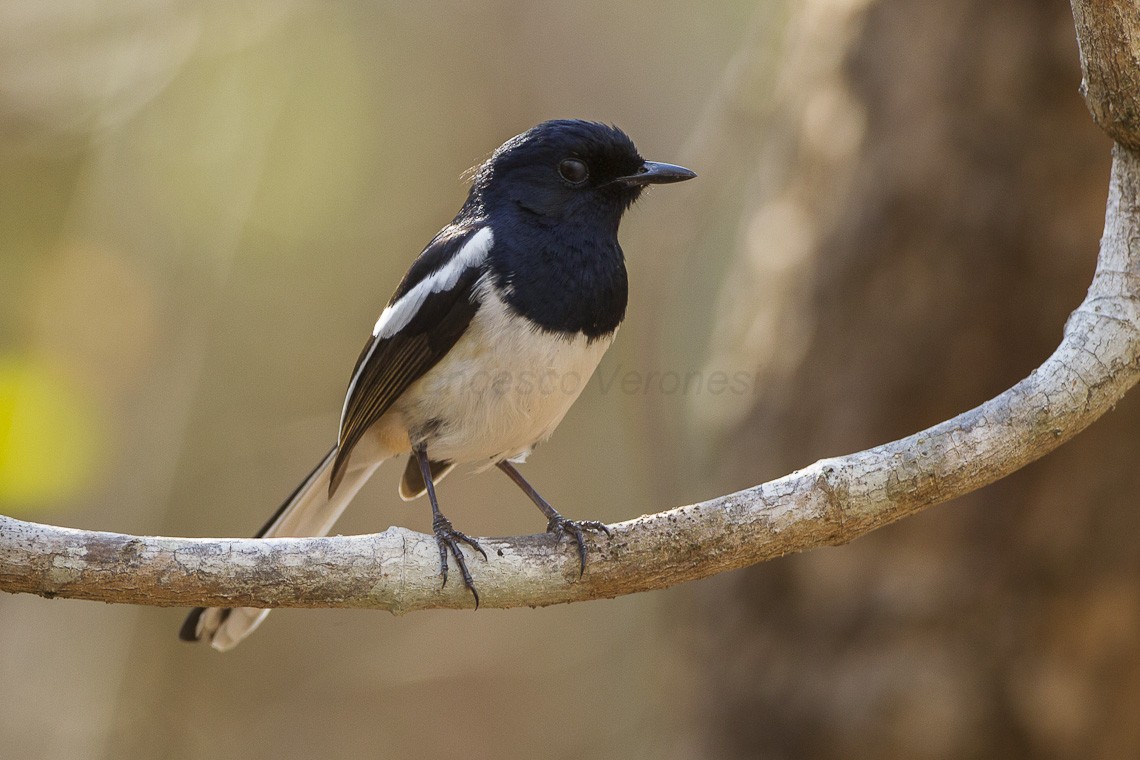Madagascar Magpie-robin
A species of Magpie-robins and Shamas Scientific name : Copsychus albospecularis Genus : Magpie-robins and Shamas
Madagascar Magpie-robin, A species of Magpie-robins and Shamas
Botanical name: Copsychus albospecularis
Genus: Magpie-robins and Shamas
Content
Description General Info
 Photo By Francesco Veronesi , used under CC-BY-SA-2.0 /Cropped and compressed from original
Photo By Francesco Veronesi , used under CC-BY-SA-2.0 /Cropped and compressed from original Description
The Madagascan magpie-robin is around 18 cm (7 in) in length and weighs 21 to 24 g (0.74–0.85 oz). The plumage varies by sex; the male of the nominate subspecies has all-black plumage with a white shoulder patch and the female has a grey-brown crown, back and tail, grey-breast and throat and rufous wings and rump. The males of the other two subspecies have more white of the wings and a white abdomen; the female of C. a. pica is much paler overall. 
Size
18 cm
Nest Placement
Tree
Feeding Habits
Madagascar Magpie-robin consumes a varied diet of insects such as cockroaches and beetles, spiders, earthworms, small lizards, amphibians, and berries. Exhibiting sexual niche differentiation, females forage more on the ground, while males search higher in the undergrowth; sometimes madagascar Magpie-robin joins mixed-species flocks.
Habitat
The madagascar Magpie-robin exhibits remarkable adaptability, inhabiting diverse ecosystems from dense rainforests to arid spiny forests. Commonly found from sea level up to 1,800 meters, they thrive in primary and secondary forests, often near water sources. Their resilience extends to human-altered areas like gardens and agricultural landscapes, demonstrating a versatile ecological tolerance.
Dite type
Omnivorous
General Info
Feeding Habits
Bird food type
Distribution Area
Madagascan magpie-robins occupy most of the habitats available on the island, from scrubland to dry monsoon forest, humid rainforest, forest edge, mangrove forests, secondary growth, as well as a variety of agricultural land including gardens, banana, coffee and eucalyptus plantations. They can be found from sea level to 1,800 m (5,900 ft). 
Species Status
Not globally threatened.
Scientific Classification
Phylum
Chordates Class
Birds Order
Perching birds Family
Old world flycatchers Genus
Magpie-robins and Shamas Species
Madagascar Magpie-robin